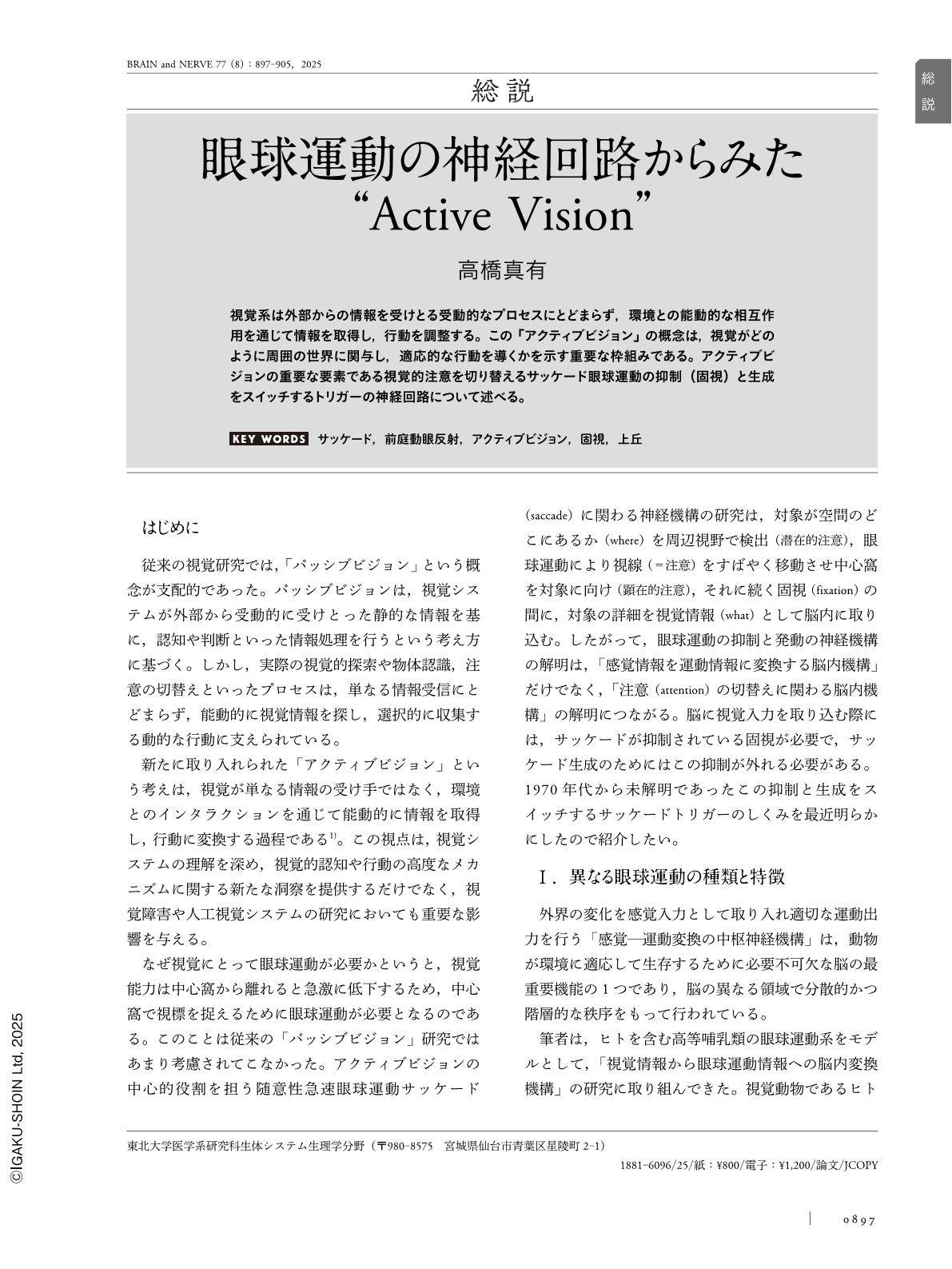Japanese
English
- 有料閲覧
- Abstract 文献概要
- 1ページ目 Look Inside
- 参考文献 Reference
視覚系は外部からの情報を受けとる受動的なプロセスにとどまらず,環境との能動的な相互作用を通じて情報を取得し,行動を調整する。この「アクティブビジョン」の概念は,視覚がどのように周囲の世界に関与し,適応的な行動を導くかを示す重要な枠組みである。アクティブビジョンの重要な要素である視覚的注意を切り替えるサッケード眼球運動の抑制(固視)と生成をスイッチするトリガーの神経回路について述べる。
Abstract
This article deals with the neural circuits involved in the generation and suppression of saccadic eye movements. Voluntary eye movements are known to be organized in two-dimensional horizontal and vertical coordinate system, whereas the vestibulo-ocular reflex (VOR) uses a three-dimensional semicircular canal coordinate system. However, it is generally accepted that the neural circuits for saccades and the quick phase of vestibular nystagmus share a common pathway. Despite the discrepancy, this issue has not been noticed, because the output pathway for the vertical saccade system remains poorly understood. To resolve this discrepancy, we analyzed the pathway from the superior colliculus (SC) to vertical ocular motoneurons, using intracellular recording and staining techniques. We found that the saccade system and the vestibuloocular system share the common semicircular coordinate system. Based on this saccade generation circuit, we proceeded to analyze the saccade trigger system. Our results showed that the saccade-triggering signal originates from the saccade-driving pathway in the SC, passing through inhibitory burst neurons, to suppress the tonic firing of inhibitory omnipause neurons in the raphe nucleus. This triggering mechanism is then discussed in relation to the suppression pathway for saccades during fixation and active vision.

Copyright © 2025, Igaku-Shoin Ltd. All rights reserved.


